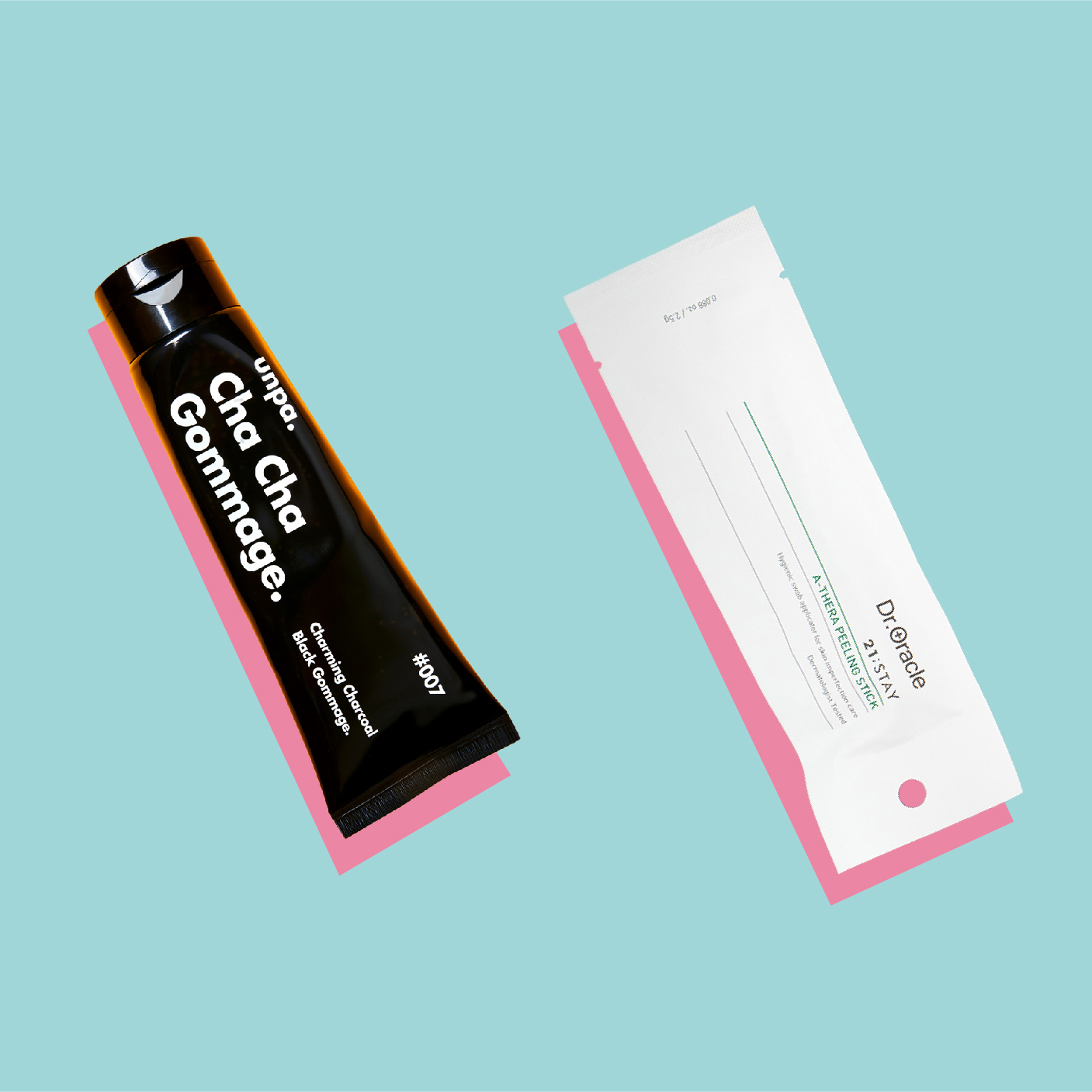Are you stuck at home and don’t have the luxury to go get a professional chemical peel from a facial spa or your dermatologist? If you are interested in trying out an at-home chemical peel but not sure where to start, follow our guide – smooth, clear, and glowing skin awaits.
A chemical peel is a procedure that refines the skin’s surface by removing the top layers of dead skin cells, leaving behind a smooth surface and, ideally, a glass skin-like finish.
While typically performed at a facial spa, there are less intense versions of a chemical peel that you do at home. Especially if you don’t have time or you’re stuck at home and don’t have the option of a professional peel, an at-home chemical peel is still easy and doable. Here, we break down the differences between the two experiences and some of our favorite at-home chemical peels on the market.
At-Home Chemical Peels vs. a Professional Chemical Peel
The main difference is the potency of formula. Ultimately, an at-home peel’s job is to remove the outermost layer of dead skin cells that dulls the skin’s complexion. They can also help improve several skin concerns, such as acne, the appearance of wrinkles, hyperpigmentation, and clogged pores. Professional chemical peels can contain a high concentration of a single acid or blended acids and penetrate deeper in the skin.
RELATED: Should You Use a Chemical or Physical Exfoliator?
Just because at-home chemical peels are gentler doesn’t mean they can’t cause irritation. This is why it’s important to do a patch test first, preferably on your wrist or arm.
When to Use Them
Ideally, at-home peels should be applied at night, the time of day when the skin enters its restoration phase, after your cleanser. Nighttime is the most optimal since the skin is not being interrupted by pollutants and debris from outside, giving the skin an opportunity to recuperate and rejuvenate from the chemicals.
Depending on your skin and the formula, use an at-home peel either once a week or as a monthly or bi-monthly treatment.
Post-Peel Care
After removing the peel from your face, always make sure to follow up with a moisturizer and SPF in the morning. Moisturizer is crucial to post-peel care since chemical exfoliants can be drying and can damage the skin barrier. As always, SPF is a must because the skin is quite sensitive to the sun’s rays after a peel.
It’s also important to steer clear of certain ingredients for at least 24 hours, such as other forms of exfoliation, vitamin C, and retinoids.
What At-Home Peels to Try
Here are a few chemical peels and peels formulated with natural exfoliators to try at home:
If you have oily skin, the Unpa Charming Charcoal Black Gommage will brighten, clarify, reduce the appearance of pores, while hydrating your skin with its blend of natural charcoal extract and charcoal powder, ginseng root and baikal skullcap root extracts, and hyaluronic acid. The charcoal in this unique peeling exfoliator will do wonders by absorbing excess oil while gently removing dead skin cells for a more vibrant, balanced, and healthy looking skin.
If you have combination skin, try the Dr. Oracle A-Thera TeaTree Peeling Sticks. This innovative peeling stick, shaped like a huge cotton swab, is formulated with natural exfoliators, such as tea tree, lemon, and bamboo extracts, and acne-fighting acids, AHA and BHA, to effectively remove dry and flaky skin cells, and clear pores and blackheads without irritating the skin. The peeling stick can be used all over the face or as a targeted spot treatment.
If you have dry or sensitive skin, the Saturday Skin Rub-A-Dub Refining Peel Gel is a great, effective option. Unlike physical scrubs or chemical exfoliators that may irritate your skin, this peeling gel uses naturally exfoliating enzymes from papayas and pineapples to remove dead skin cells and buildup revealing a bright and smooth complexion. It is also formulated with an anti-aging and hydrating patented ingredient called Cha-7 es Complex that helps the skin regenerate and plump fine lines and wrinkles for a more youthful appearance.
If you have normal skin, the Dr. Dennis Gross Clinical Grade Resurfacing Liquid contains a high concentration of glycolic and lactic acids to improve the skin’s brightness while combating the appearance of wrinkles. Its high acid concentration of acids may not be for everyone, so make sure to perform a patch test before use.
